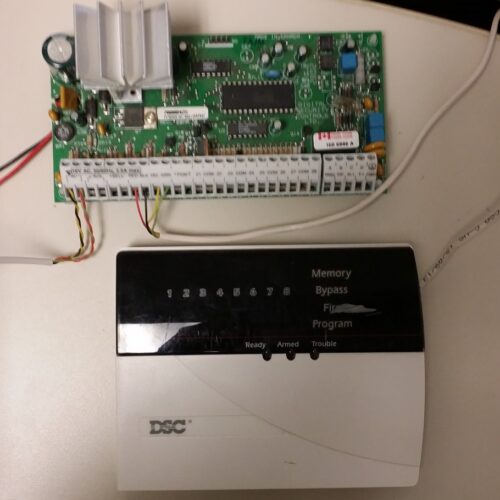Internet dropouts are annoying at the best of times. When the connection is the only lifeline to a remote property loaded with gear, it becomes a full-on liability. That’s exactly the headache a friend of mine was facing with a 5G modem setup at his off-grid acreage.
It’s not a place he lives full-time, but it’s where he keeps a camper, some equipment, and a handful of cameras to keep an eye on things. The 5G modem is his lifeline when he’s not around. Unfortunately, the ISP he’s using has a bad habit of silently dropping the connection – and it doesn’t come back on its own. No amount of waiting helps. The only fix is pulling the plug.
That’s fine if you’re standing next to the outlet. Not so great when you’re 200 kilometers away.
So we built a fix that works even when everything else doesn’t.
What You’ll Need
- Sonoff S31 Smart Plug (flashed with ESPHome)
- Access to ESPHome (via Home Assistant or standalone)
- A very patient tolerance for cellular providers that sell unreliable connections
Turning a Smart Plug into a Modem Lifeline
The idea was simple: if the modem stops responding, cut power to it for a few seconds, then turn it back on. The implementation, though, needed to be smart enough to avoid accidental triggers, offer manual overrides, and recover gracefully from power outages.
The Sonoff S31 was perfect for the job. It already had the relay we needed, plus energy monitoring, status LED, and a physical button we could repurpose. Flashing it with ESPHome opened the door to full control.
Flashing was done using the method outlined in this earlier project, with solder pads exposed, a USB-to-serial adapter, and a bit of patience.
Once flashed, we deployed this ESPHome configuration to the plug, with everything you need to replicate the setup. Comments are included inline to explain key parts.
# sonoff-5g-modem-controller.yaml
esphome:
name: sonoff-5g-modem-controller
libraries:
- ESP8266WiFi
- https://github.com/akaJes/AsyncPing#95ac7e4
external_components:
- source:
type: git
url: https://github.com/trombik/esphome-component-ping
ref: main
esp8266:
board: esp01_1m
early_pin_init: false # Prevents relay from toggling during firmware upload
wifi:
networks:
- ssid: "mywifi_name"
password: "mywifi_password"
- ssid: "myalternate_wifi"
password: "alternate_passsword"
ap:
ssid: "S31-modemplug" # in case it can't connect and you need to reprogram it
password: "mysupersecurepassword"
use_address: 10.0.0.222 #set a fall back IP in the event of DHCP Failure
logger:
baud_rate: 0 # UART interferes with energy monitoring chip
level: DEBUG
logs:
ping: DEBUG
script: DEBUG
sensor: WARN
web_server:
port: 80
include_internal: true
ota:
- platform: esphome
uart:
rx_pin: RX
baud_rate: 4800
parity: even
binary_sensor:
- platform: gpio
pin:
number: GPIO0
mode: INPUT_PULLUP
inverted: True
name: "Sonoff 5G Modem Button"
on_press:
- script.execute: power_cycle_relay
- platform: status
name: "Sonoff 5G Modem Status"
sensor:
- platform: wifi_signal
name: "Sonoff 5G Modem WiFi Signal"
update_interval: 60s
- platform: cse7766
current:
name: "Sonoff 5G Modem Current"
filters:
- throttle: 300s
voltage:
name: "Sonoff 5G Modem Voltage"
filters:
- throttle: 300s
power:
name: "Sonoff 5G Modem Power"
filters:
- throttle: 60s
- platform: ping
ip_address: 1.1.1.1 # Cloudflare DNS used to check internet status
id: ping_response
num_attempts: 1
timeout: 3sec
loss:
name: "Packet Loss to Internet"
id: loss
latency:
name: "Latency to Internet"
update_interval: 20s
switch:
- platform: gpio
name: "Sonoff 5G Modem Relay"
pin: GPIO12
id: relay
restore_mode: ALWAYS_ON
status_led:
pin: GPIO13
globals:
- id: last_power_cycle
type: time_t
restore_value: no
initial_value: '0'
- id: packet_loss_count
type: int
restore_value: no
initial_value: '0'
interval:
- interval: 60s
then:
- script.execute: ping_check
script:
- id: ping_check
then:
- if:
condition:
lambda: 'return id(loss).state > 0;'
then:
- lambda: |-
id(packet_loss_count) += 1;
if (id(packet_loss_count) >= 3) {
id(packet_loss_count) = 0;
id(power_cycle_relay).execute();
}
else:
- lambda: 'id(packet_loss_count) = 0;'
- id: power_cycle_relay
then:
- lambda: |-
time_t now = id(esphome_time).now().timestamp;
if (now < 600) {
ESP_LOGD("power_cycle_relay", "Skipping power cycle during boot");
return;
}
if ((now - id(last_power_cycle)) < 600) {
ESP_LOGD("power_cycle_relay", "Skipping power cycle too soon after last");
return;
}
id(last_power_cycle) = now;
ESP_LOGD("power_cycle_relay", "Power cycling due to packet loss or button press");
id(relay).turn_off();
- delay: 5s
- lambda: 'id(relay).turn_on();'
time:
- platform: sntp
id: esphome_time
servers:
- 0.pool.ntp.org
This little plug now acts as a network babysitter. It connects to the pre-programmed WiFi. Then if pings to the internet fail three times in a row, it assumes the modem has ghosted us again and gives it a five-second timeout. It won’t retry again for ten minutes and waits ten minutes after boot to avoid unnecessary toggling during startup.
If someone’s physically at the site, the button on the plug can also be pressed to cycle the power manually. And if that fails, the built-in web interface still gives access to sensors and controls.
We also included full energy monitoring, which could be helpful if he deploys Home Assistant in the future (right now this works completely stand alone). Bonus points if you ever want to correlate modem uptime to power spikes or brownouts.
Why This Works
The culprit in this setup is the cellular provider. We tested the same 5G modem on a different SIM and it was rock solid. Unfortunately, the provider used at the property seems to silently sever the connection after a while and doesn’t always recover without a power cycle. Even cycling just the interface from the modem GUI doesn’t help. It needs a full unplug-replug moment.
With this watchdog in place, the system has stayed online consistently now for months. The modem takes a five-second nap when needed, wakes up refreshed, and reconnects like nothing happened.
This type of setup is perfect for remote security cameras with flaky internet, off-grid Starlink or LTE failover links, or even solar-powered equipment where uptime is critical
And honestly, even in urban setups, there’s something comforting about having gear that can kick itself in the pants when it stops behaving.
If you’ve run into weird modem issues or remote sites that need babysitting, this might be the most reliable $25 fix you’ll ever flash.



